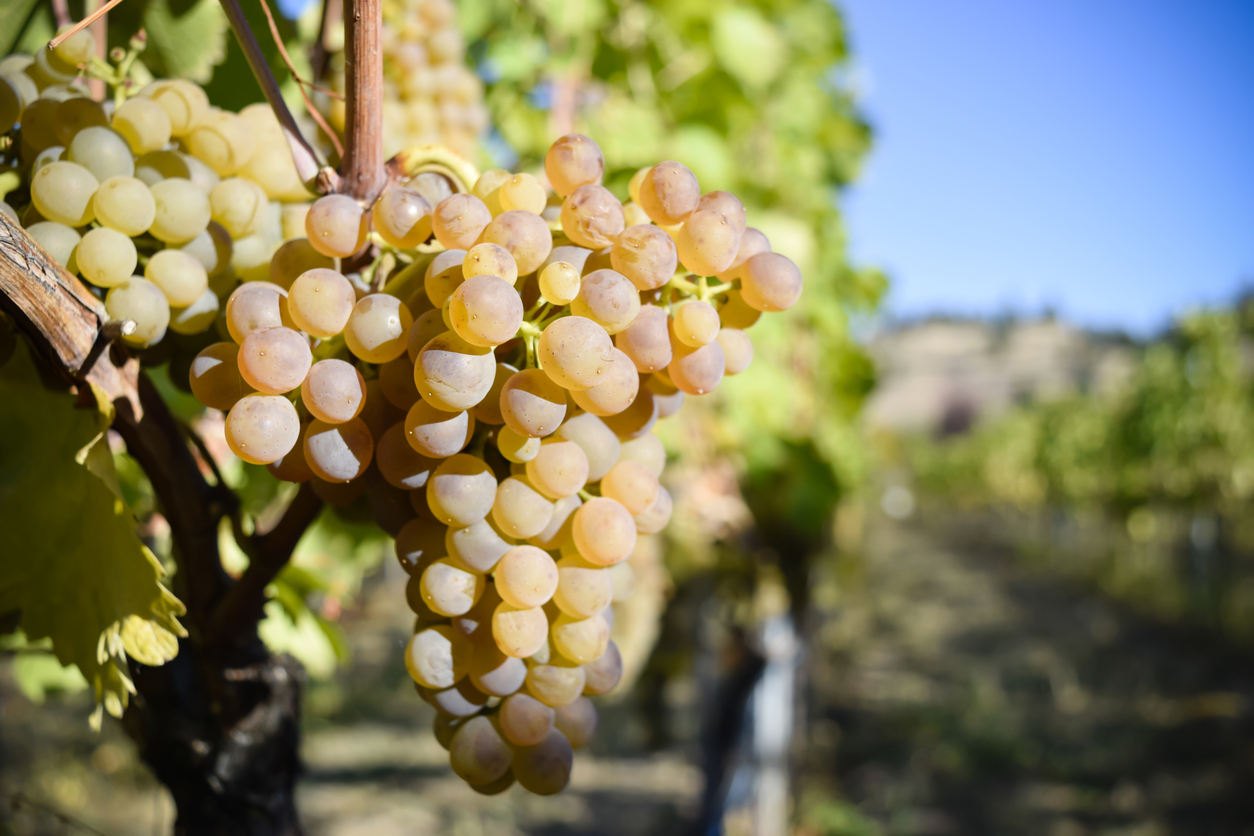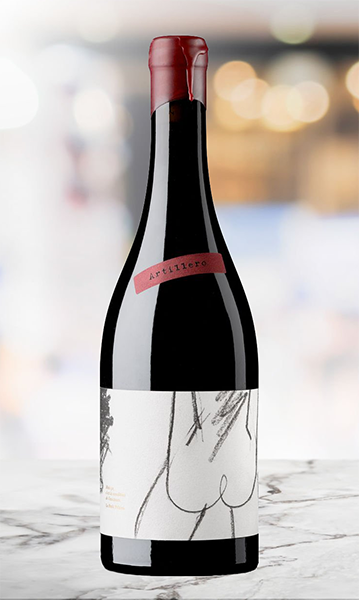
Viognier, pronounced vee-on-YAY, is a white grape of French origin. Most commonly grown in the Rhone Valley, located in the southeastern part of the country, south of Beaujolais and slightly north of Provence.
Interestingly, although viognier is a white grape that makes a unique white wine, it’s often blended with syrah in small quantities to add floral, fruity notes to the nose. This type of blend is typical in the northern Rhone, especially in the sub-region of Côte Rotie, but wherever syrah is made in the Rhone style, you’ll find viognier along for the ride.
That being said, two appellations in the Rhone Valley are 100% viognier—namely, Condrieu and Château Grillet. The latter of these is a single property, the former one of the more expensive examples of viognier—but worth the indulgence if you can find one!
What Does Viognier Taste Like?
Viognier is an aromatic grape, much like riesling, gewürztraminer, and sauvignon blanc. While you’ll find varietal viognier in a range of styles, it most typically shows distinct, lifted aromas of white peach. Viognier wine can be crisp, light, and refreshing, or it can be highly textured, full-bodied, and rich, depending on how it is made.
To maintain viognier’s varietal character, most winemakers will choose a long, cool ferment in a neutral vessel, such as stainless steel or concrete, to emphasize and preserve the aromatics.
However, should they decide to treat their viognier like a chardonnay, it could be barrel-fermented and put through a secondary fermentation, which will change the body, aromas, and flavors significantly. In this case, you’ll still get the peach and apricot aromas, but it will be underscored with creaminess and hints of vanilla and spice.
Where to Find Viognier Wine
Viognier is an early-ripening variety, but it’s not a consistent producer. You would think it would be cultivated more plentifully in cooler regions, but it tends to be a bit finicky and is not as reliable as chardonnay. Nor is it as popular; it would seem that the wine-buying public tends to shy away from wines they can’t pronounce!
Viognier’s unique aromatic profile makes it highly versatile for blending. In addition to being blended with syrah to produce Rhone-style reds, you’ll sometimes find it blended with chardonnay in small quantities or holding its own as an equal player in aromatic white blends.
Discover viognier and viognier blends in Provence and Languedoc in southeastern France, Australia, and California, and to a lesser degree in Chile, Canada, Argentina, Italy, and South Africa.
Pairing Viognier with Food
Pairing Viognier with Food
Viognier is usually made in a dry style, but even a tiny bit of sugar will enhance its fruitiness. Pair viognier with:
- Chicken tagine braised with apricots and Moroccan spices
- Grilled or pan-seared white fish with light cream sauce (or no sauce)
- Abalone fritters
- Sweetbreads
- Teriyaki
- Vegetarian dishes
- Chicken or duck a l’orange
- Grilled portobello mushrooms with apricot chili compote
- Anything deep-fried
Because of its intensity and sometimes high texture, you might be tempted to pair viognier with saucy, high-umami cuisine, like Indian or Thai. Unfortunately, viognier can easily overpower these dishes, so it’s best avoided unless you approach the experience as an experiment.






